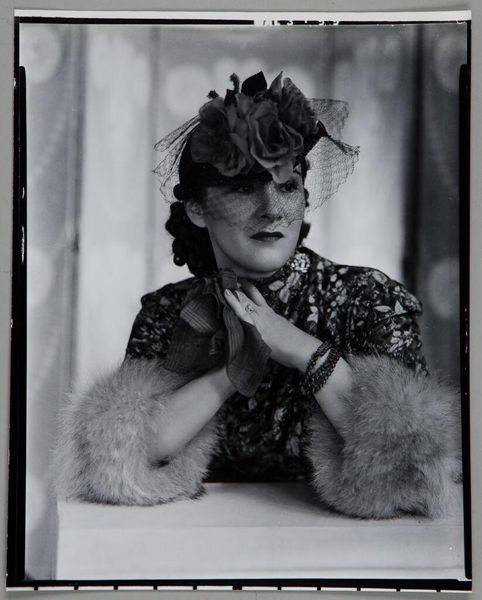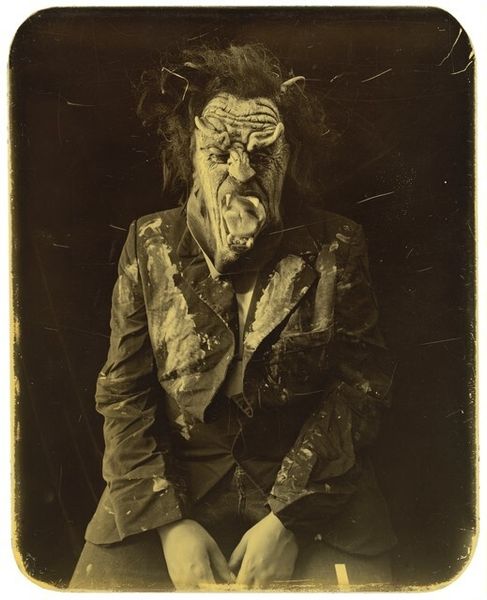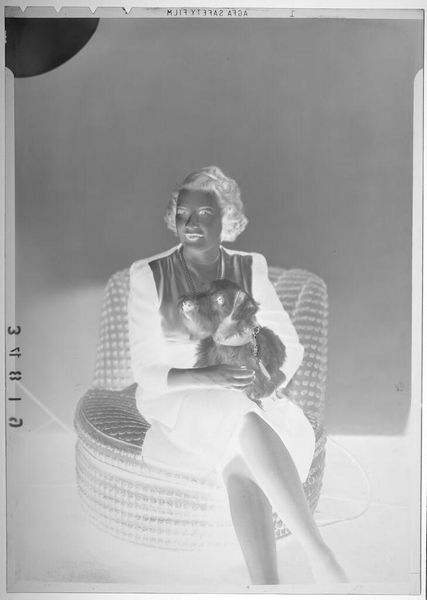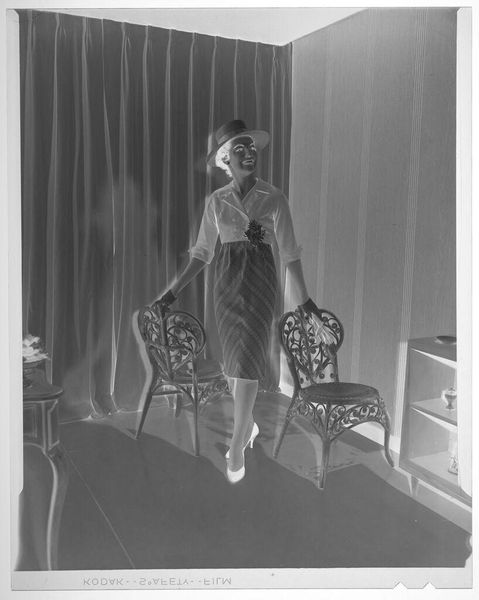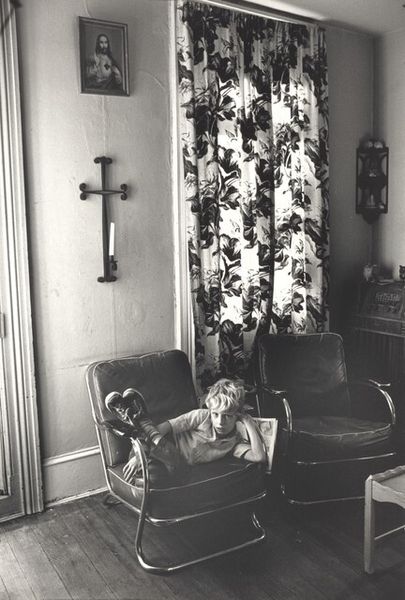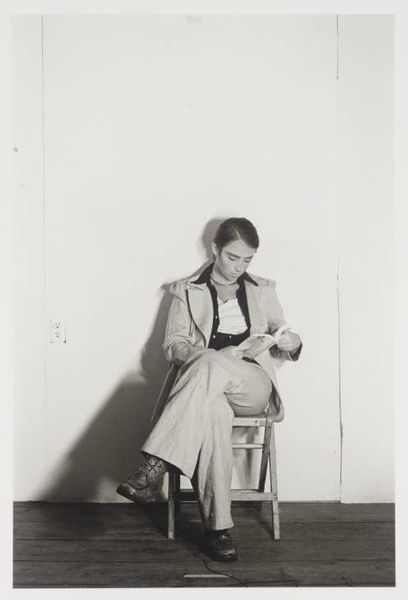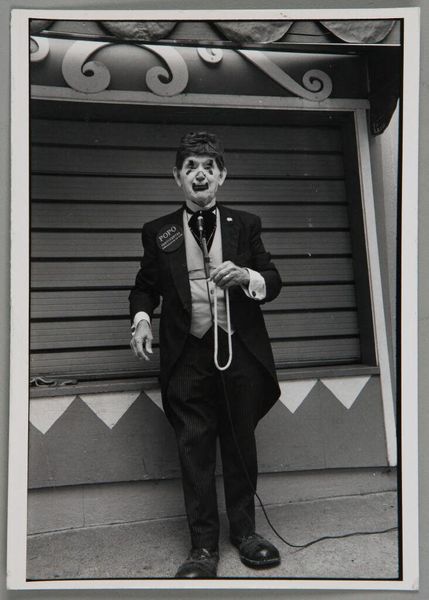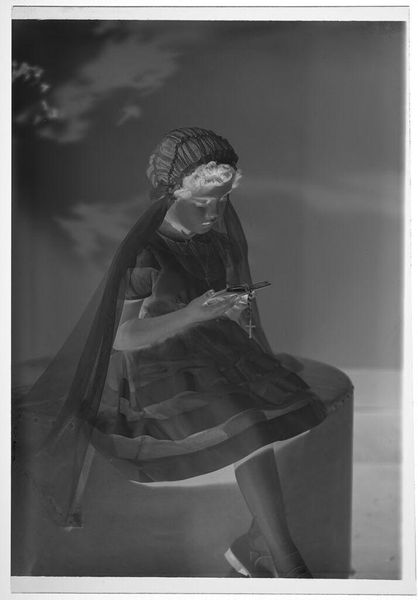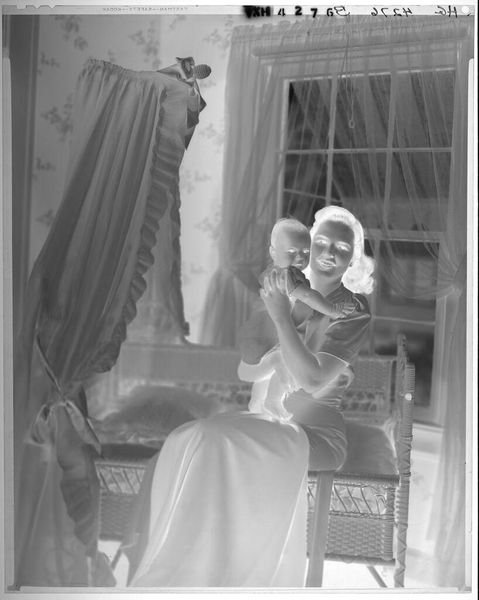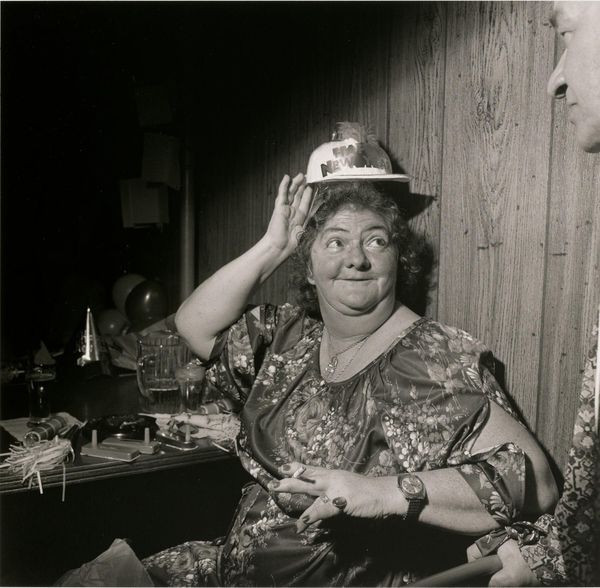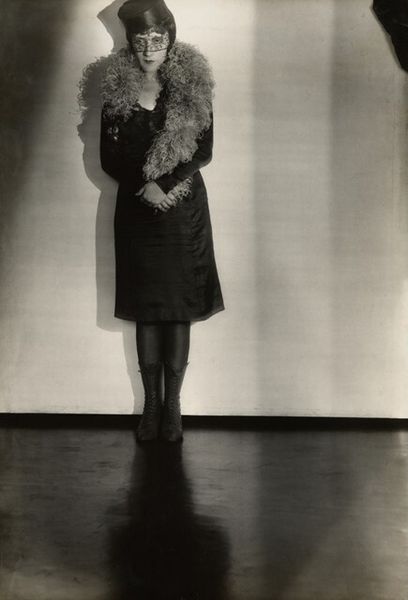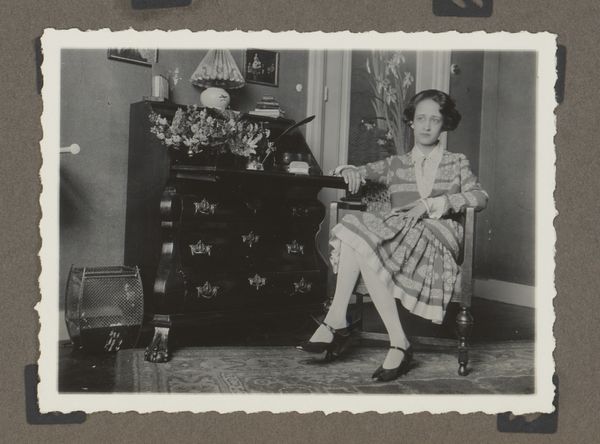
photography, gelatin-silver-print
#
portrait
#
black and white photography
#
photography
#
gelatin-silver-print
#
realism
Dimensions: image: 35.1 x 44.8 cm (13 13/16 x 17 5/8 in.) sheet: 40.6 x 50.5 cm (16 x 19 7/8 in.)
Copyright: National Gallery of Art: CC0 1.0
Curator: Here we have Joan Cassis's portrait, "Jim Brittain," captured in 1987 using the gelatin-silver print technique. The stark monochrome immediately strikes me. Editor: The scene’s overall effect suggests a carefully arranged tableau of materiality. The flatly printed waterfowl wallpaper almost parodies conventional domestic aspiration, contrasting with the sitter's disheveled appearance and somewhat decayed surroundings. The choice to employ photography emphasizes its documentary character. Curator: Indeed, Cassis has masterfully used composition to create a captivating character study. Observe how Brittain is positioned slightly off-center, drawing the viewer's eye to his face—that gleeful, almost mischievous grin. The realism is undeniable, revealing wrinkles and imperfections with an almost brutal honesty. Editor: Exactly. Note also how the choice of materials—the silver gelatin process—facilitates that stark, unvarnished realism you point to. Moreover, the wallpaper seems purposefully chosen, almost mass-produced as a cheap aspiration to upward mobility that only reveals its superficiality when paired with the aging sitter and the slightly dingy environment. Cassis lays bare the complex layers of aspiration, labor, and eventual disillusionment often woven into lives like Brittain's. Curator: I appreciate your perspective. I find the lighting particularly intriguing, how it sculpts Brittain's face and clothes. The contrast between light and shadow creates a sense of depth, drawing attention to certain details—the pattern of his jacket, for instance, or the delicate veins on the back of his hands. All those visual components serve to accentuate his persona, offering us a complex character through purely formal means. Editor: Yet such form always remains connected to material reality. We see how the choice of black and white strengthens the documentary value by eschewing unnecessary color effects; therefore, the photographer encourages viewers to make social conclusions from those stark compositional arrangements within a distinct material culture. Curator: I see your point. Ultimately, the artwork's brilliance rests on the formal components which guide the viewers' insight to the portrayed figure. Editor: I'd argue that its power emerges precisely from the tensions between that portrayal and the concrete setting from which his image emerges and becomes known.
Comments
No comments
Be the first to comment and join the conversation on the ultimate creative platform.
